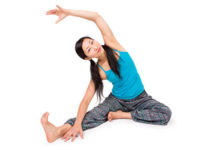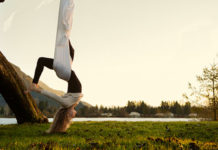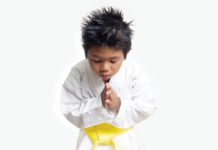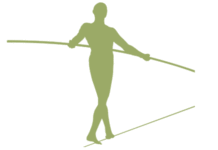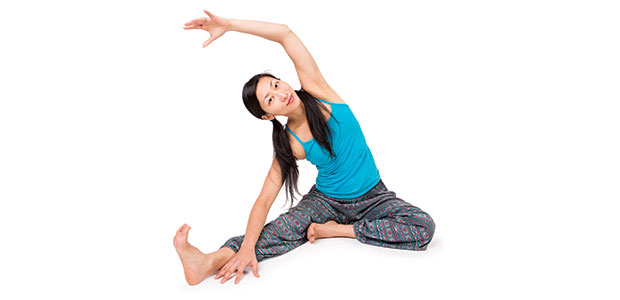
Everyone can do yoga! Discover some simple beginner poses for a healthy New Year.
Are you ready to set an intention for your health? Visit a yoga studio or practise our suggested yoga poses at home to increase vitality and balance. Yoga is something that everyone can do—it’s about tuning into your body and mind.
Benefits of yoga
Relaxation
In yoga, you bring your attention to your breath and this can help elicit a relaxation response, or a calmness of mind and body.
Improved sleep
A study from Harvard found regular yoga practice may improve sleep quality. Several studies of older adults have shown that practising yoga can improve sleep duration and quality, anxiety, tension, well-being, and quality of life.
Physical changes
Yoga helps develop balance, strength, and flexibility. Spending time tuning into your body can help you become clear about your fitness goals.
A gentle wake-up
A morning yoga practice is a great way to ease into your day. Wake up 15 minutes early for a quick yoga practice and you’ll feel grateful that you started your day on a note of health.
Tips for getting started
Remember that how you feel in the posture is more important than how you look in the posture. Everyone can do yoga.
Take introductory lessons
Consider signing up for a four- or five-week series of introductory lessons to learn directly from an experienced and trained teacher. Learning with other beginners may help you feel more comfortable in instructor-led classes. Try not to focus on everyone else in the class. If your mind wanders, try to focus your mind on your breathing and to other sensations in your body.
Eliminate distractions
If you’re practising at home, find a space as free from distractions as you can manage. Even squeezing in a five-minute practice will provide benefits.
Seek health care advice
Seek advice from your health care practitioner before starting any new exercise program. These poses are not recommended for people who are new to yoga and have blood pressure issues or for women who are pregnant.
Pause before you begin
Take a few quiet moments to remind yourself why you are trying these poses. What are you trying to bring into your life? Ease? Strength? Flexibility? Balance? Relaxation? Lightness? Set an intention to bring one of these areas into your practice.
Yoga talk
You might hear these common terms in a yoga class.
| Term | Definition |
| asana | yoga postures |
| drishti | a focused gaze; keeping your gaze on one spot can help you balance your body and calm your mind |
| hatha yoga | usually gentle classes to bring balance; the word comes from the Sanskrit words ha (sun) and tha (moon) |
| mantras | syllables, words, or phrases that are repeated to create transformation; a type of prayer |
| mudras | symbolic gestures made with the body or hands; for example, bringing the hands together in prayer is known as Anjali Mudra |
| namaste | often said among yoga class participants at the end of a class, it’s the recognition of the light in each of us |
| Om | said to be the universal sound, om has four parts: ah-oh-m-silence; may be chanted at the end of yoga practice |
| pranayama | breath awareness; focusing on our breathing is important in yoga practice |
| props | aids such as blocks, blankets, bolsters, or straps that are used to make yoga poses more comfortable |
| Shavasana or Savasana | often the final relaxation posture during a class, also known as Corpse Pose |
Mountain Pose or Tadasana
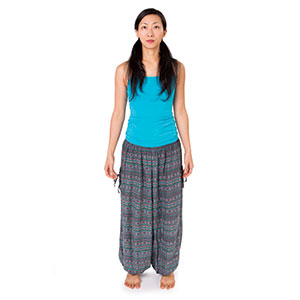
- Begin standing with your legs hip-width apart.
- Try to relax your shoulders downward.
- Keep the back of your neck long, with your chin slightly tucked in.
- Gently contract the muscles in your legs and arms.
- Keep your knees and elbows soft.
- Inhale slowly and deeply.
- Try to keep your gaze steady on one fixed spot.
- Inhale and exhale 5 times.
Practice tip: Is your mind busy? Try mentally repeating “my mind is relaxed” on your inhalation and “my body is grounded” on your exhalation.
Cat and Cow Spinal Movements
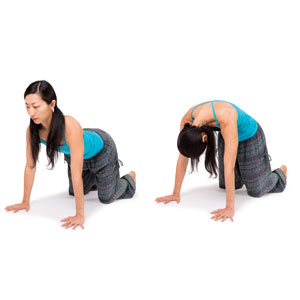
- Begin on your hands and knees.
- Align your wrists under your shoulders. Spread your fingers wide and engage
their muscles. - Keep your shoulder blades drawing together and your core strong.
- Align your knees under your hips.
- Inhale, drop your belly, and bring your gaze forward (cow).
- Exhale and round your back, tucking your chin to your chest (cat).
- Keep the movements in your neck gentle, particularly for the first round.
- Repeat these movements 3 to 5 times, matching your movement with your breath.
- Try to initiate the movement from your lower spine and allow the movement to ripple up your spine.
Practice tip: Is your mind busy? Try mentally repeating “my spine is limber” on your inhalation and “my thoughts are clear” on your exhalation.
Downward Dog Pose or adho mukha Svanasana
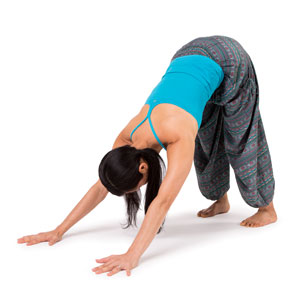
- Begin on your hands and knees.
- Bring your hips up high by straightening your legs and tucking your toes under.
- Use the muscles in your arms, legs, and core to hold yourself.
- Keep the back of your neck long. Your neck should be in line with your spine.
- Focus on bringing your shoulders away from your ears.
- Visualize your heels dropping to the floor.
- Bend your knees as necessary, for comfort.
- Focus on keeping your spine long.
- Try to hold the posture for 2 to 5 rounds of breath.
Practice tip: Is your mind busy? Try mentally repeating “my body is strong” on your inhalation and “my mind is focused” on your exhalation.
Triangle Pose or Trikonasana
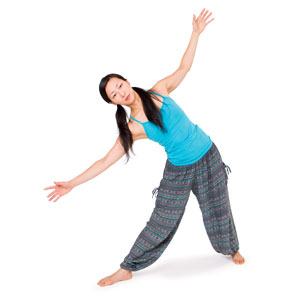
- Begin with your feet wide apart and your feet parallel.
- Inhale and pivot your right foot out about 90 degrees.
- Your left foot can also move in slightly.
- Exhale and reach down to your right leg, ankle, or a block with your right hand.
- Reach your left arm away from your right arm. Try to maintain equal weight in both legs.
- Keep a small bend in your knees.
- Your head and eyes can look down or to the horizon. If you have no issues with your neck, you can gently look to the sky.
- Inhale and exhale 5 times.
- Repeat for the other side.
Practice tip: Is your mind busy? Try mentally repeating “my body is relaxed” on your inhalation and “my mind is still” on your exhalation.
Tree Pose or Vrikshasana
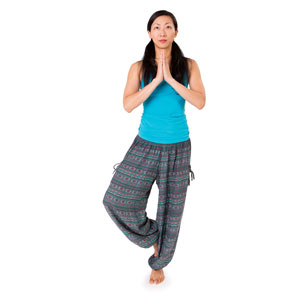
- Begin in Mountain Pose for 1 or 2 rounds of breath.
- Bring your weight into your left leg.
- Raise your right leg and place the sole of your right foot on your left ankle, calf, or thigh, being careful to avoid the knee area.
- Keep your arms at your side or on your hips. Or bring your hands to your heart centre with your palms pressing together or Anjali Mudra.
- Keep your gaze fixed on one spot so you can focus your balance.
- Inhale and exhale 3 times, building up to 5 rounds of breath over time.
- Repeat for the other side.
Practice tip: Is your mind busy? Try mentally repeating “my mind is still” on your inhalation and “my body is balanced” on your exhalation.
Note: If this is too challenging, you can also try Tree Pose lying on your back to begin.














